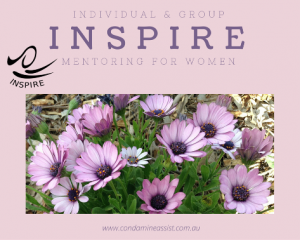“My mission in life is not merely to survive, but to thrive; and to do so with some passion, some compassion, some humor, and some style.” — Maya Angelou
I’m so incredibly excited to announce that registrations are now open for my online group program THRIVE for Women! Dozens of women have participated in the face-to-face version of this group over the last 6 years and now at last I’m able to offer it online so you can participate in the comfort of your own home (or anywhere else)!
Women often have many roles to fill at work, home and in the community. Self-care often comes last on our list of things to do. Yet there are many actions we can incorporate into our day to strengthen us, help us to be more efficient and effective, enable us to think more clearly and make better choices. When we routinely use these actions, we begin to THRIVE – not just survive!
Are YOU ready to take action? To be consistent with the habits that help you to feel strong and capable? To function at your highest level? To get on top of your stresses? To achieve your goals? To develop mind and body strength? To think like a winner? If so, THRIVE for Women is for you!
What topics are covered?
After many years of working with people one-on-one, I’ve created this group program addressing the issues women often share:
- How can I sleep better?
- How can I maintain a routine of exercise and nutrition that I love, and that is good for my mental health?
- How can I choose and stick to goals?
- How can I get unstuck when things don’t go to plan?
- How can I juggle the priorities in my life?
- How can I best manage the stresses in my life?
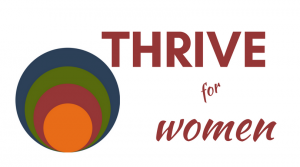 How does THRIVE for Women work?
How does THRIVE for Women work?
THRIVE for Women includes a weekly group video call on different wellness / mental health topics, handouts on everything we cover in the calls (plus more!), a private discussion page, and a BONUS one-on-one session for participants at the end of the program!
** The live group video calls will be held weekly for 6 weeks commencing Monday 23rd July 2018 from 7:30pm to 8:30pm (AEST). You’ll need a device with a web cam or inbuilt camera connected to a reliable Internet connection (eg tablet, IPAD, computer). We’ll be using a safe video conference platform called Zoom for the video meetings – it’s easy to use and all instructions will be given to you before THRIVE starts!
Why join an online group?
I’ve run face-to-face women’s groups for many years now, and they’ve been so successful that it’s time to take them online! This way you can join in from the comfort of your own home. No more child care issues. No more transport or parking hassles. No more juggling work responsibilities to get to the group.
What are the benefits for me?
There are so many benefits when you join THRIVE for Women:
- discover the latest PROVEN strategies for MIND and BODY health
- CONNECT with other women and learn from each other in a CONFIDENTIAL and FRIENDLY atmosphere
- grow RESILIENCE, INNER STRENGTH, SELF-COMPASSION and WELLNESS
- develop a range of SKILLS for living a life that THRIVES
- explore a different topic each week through LIVE ONLINE VIDEO meetings (a recording will be available if you are not able to make it to a live session)
- PROBLEM-SOLVE the real issues that get in the way of self-care routines
- access INFORMATION SHEETS, CHECKLISTS and a PRIVATE DISCUSSION GROUP
- OVER 6 HOURS of access and support in a group that would cost you hundreds of dollars one-on-one
- guidance by an Accredited Mental Health Social Worker using EVIDENCE-BASED approaches
- participate in a BONUS one-on-one session to really make the biggest difference in your life!
 How much does THRIVE for Women cost?
How much does THRIVE for Women cost?
To celebrate the launch of THRIVE for Women online, you can currently register at the SUPER-SPECIAL PRICE of $175 with the added BONUS of a one-on-one session at no extra cost. (The total value of this program is over $1000, so it really is amazing value for everyone who registers for this first launch! That’s over 7 hours of contact with an Accredited Mental Health Social Worker guiding you towards a life that THRIVES, plus all the written material and resources for future reference, plus the connections made with the other group members!)
How do I register?
Registrations are easy! Simply click here to go to the booking site where you can make a secure payment online and provide your contact details. Once registered, you’ll receive an email from me with more details about how we will connect together.
What women are saying about Kathryn’s face-to-face groups
100% of past participants have strongly agreed that the group assisted them to develop new knowledge and / or skills in managing their mental health.
The best part of the group was “…..meeting new ladies and realising I wasn’t alone in my feelings or shortcomings, but then learning there are ways I can improve my life.”
“To feel comfortable with the group in a non judgemental way. Learning new ways to think and put into practice stress management. And let go of things out of my control.”
“Realising there are other ways of thinking. There are some things you just can’t control…..no matter how much you worry about them.”
If you have any questions, simply send me a message or give me a call on 0455 992 419. As always, I’d love to hear from you!

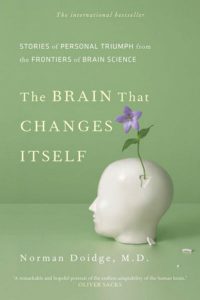


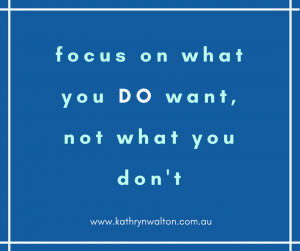

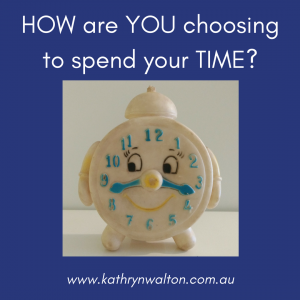
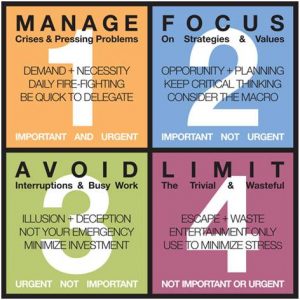
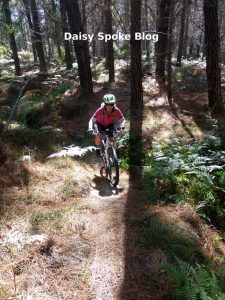 was missing it.
was missing it. 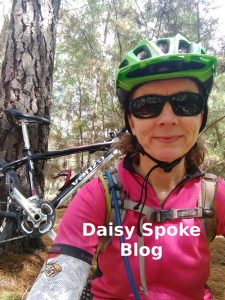 I’ve been practising and teaching this technique for a lot of years, and yet still I sometimes forget to do it when the moment arises. The thing is that on Sunday morning I DID NOTICE those fearful thoughts bouncing round my head. And guess what?
I’ve been practising and teaching this technique for a lot of years, and yet still I sometimes forget to do it when the moment arises. The thing is that on Sunday morning I DID NOTICE those fearful thoughts bouncing round my head. And guess what? 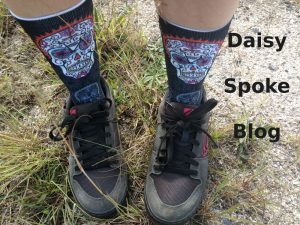 of short hills engaging my quads in an exertion that a couple of years ago would have been painful (if not impossible)! I pedalled in a higher gear than normal and found it easier than expected.
of short hills engaging my quads in an exertion that a couple of years ago would have been painful (if not impossible)! I pedalled in a higher gear than normal and found it easier than expected. 
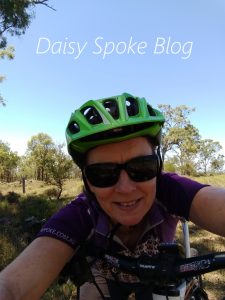 Daily exercise and general physical activity are crucial elements of feeling good. Just as some people might need to diligently take medication every day, I need to exercise every day. Exercise is nature’s way of stimulating the hormones which aid concentration, problem-solving, sleep, digestion, and mood. This daily dose of exercise rebalances our body’s systems resulting in wide-ranging benefits that no single medication can provide. The research is absolutely clear that regular medium to high intensity exercise can have a profound effect on health AND happiness.
Daily exercise and general physical activity are crucial elements of feeling good. Just as some people might need to diligently take medication every day, I need to exercise every day. Exercise is nature’s way of stimulating the hormones which aid concentration, problem-solving, sleep, digestion, and mood. This daily dose of exercise rebalances our body’s systems resulting in wide-ranging benefits that no single medication can provide. The research is absolutely clear that regular medium to high intensity exercise can have a profound effect on health AND happiness.
 Minds are such complex things! They wield a lot of power over our emotions and our actions (including sleep). But unless you notice what’s going on in your mind, and choose how much power to give it, your thoughts, assumptions and beliefs will control you instead of the other way around. The habit of being hooked by thoughts or strongly attached to them is limiting and anxiety-provoking. The key here is to begin by simply noticing what is happening in your mind, and by doing this with curiosity and without judgement. The power is in the noticing. You’ll collect all sorts of interesting bits of information about how your mind works, what thinking patterns it gets locked into, what beliefs and assumptions are behind it all, and how all of this impacts your physiology, your behaviours and your emotions. One of my favourite sayings is “Don’t believe everything you think!” because we can learn to stand back, notice the thought and choose whether to believe it, or not.
Minds are such complex things! They wield a lot of power over our emotions and our actions (including sleep). But unless you notice what’s going on in your mind, and choose how much power to give it, your thoughts, assumptions and beliefs will control you instead of the other way around. The habit of being hooked by thoughts or strongly attached to them is limiting and anxiety-provoking. The key here is to begin by simply noticing what is happening in your mind, and by doing this with curiosity and without judgement. The power is in the noticing. You’ll collect all sorts of interesting bits of information about how your mind works, what thinking patterns it gets locked into, what beliefs and assumptions are behind it all, and how all of this impacts your physiology, your behaviours and your emotions. One of my favourite sayings is “Don’t believe everything you think!” because we can learn to stand back, notice the thought and choose whether to believe it, or not.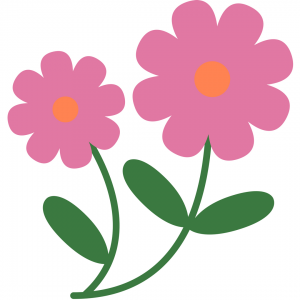 make the best ‘recipe’ for resilience and happiness – our world is full of distractions and quick-fix ideas. So, here I’d like to offer you some of the action-based ingredients that stand out through the ages and in all parts of world, and that are now backed up by rigorous research. In the next blog I’ll outline some of the very powerful mind-based strategies you can add to your mix to really step into your strength.
make the best ‘recipe’ for resilience and happiness – our world is full of distractions and quick-fix ideas. So, here I’d like to offer you some of the action-based ingredients that stand out through the ages and in all parts of world, and that are now backed up by rigorous research. In the next blog I’ll outline some of the very powerful mind-based strategies you can add to your mix to really step into your strength.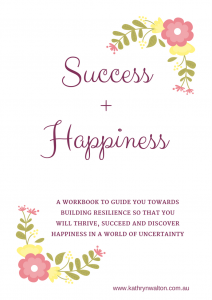 I have an EXCITING OFFER for you!
I have an EXCITING OFFER for you!


 Kathryn Walton shares information and reflections in Daisy Spoke that connect, inspire and self-empower women to make healthy choices for themselves.
Kathryn Walton shares information and reflections in Daisy Spoke that connect, inspire and self-empower women to make healthy choices for themselves.
 further afield to step into our beautiful Australian bush country! As I’ve traversed the trail over the past few months, I’ve sometimes stopped to look at the rock garden and visualise myself riding through the narrow gaps between the rocks without clunking my pedals. I knew that I would need to develop a lot more skill, line accuracy, confidence and power to ride this section. Basically I’d been riding it so slowly that I didn’t have enough power to get over the craggy rocks. Although I enjoyed my brief little fantasies of riding effortlessly over and around the rocks, I certainly didn’t have much hope that I’d ever actually be able to do it.
further afield to step into our beautiful Australian bush country! As I’ve traversed the trail over the past few months, I’ve sometimes stopped to look at the rock garden and visualise myself riding through the narrow gaps between the rocks without clunking my pedals. I knew that I would need to develop a lot more skill, line accuracy, confidence and power to ride this section. Basically I’d been riding it so slowly that I didn’t have enough power to get over the craggy rocks. Although I enjoyed my brief little fantasies of riding effortlessly over and around the rocks, I certainly didn’t have much hope that I’d ever actually be able to do it. 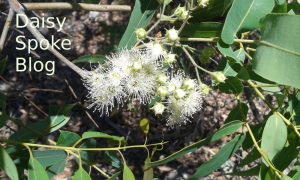 about something that was upsetting me. I wasn’t very mindful of where I was or what I was doing. Suddenly I realised I’d already ridden through the rock garden! I hadn’t dabbed my foot, I didn’t jab my pedals, and the smooth flowy feeling hit the pit of my stomach and came out of my mouth with a loud shriek, my previous upset forgotten in a moment of elation as I realised what I’d done. I’d accidentally got it right!
about something that was upsetting me. I wasn’t very mindful of where I was or what I was doing. Suddenly I realised I’d already ridden through the rock garden! I hadn’t dabbed my foot, I didn’t jab my pedals, and the smooth flowy feeling hit the pit of my stomach and came out of my mouth with a loud shriek, my previous upset forgotten in a moment of elation as I realised what I’d done. I’d accidentally got it right! Today as I walk the same trail and peer along the rock garden, I can clearly see the line that I need to take on my bike. The rocks seem so much smaller than before, the gaps between them seem so much wider, and I realise just how powerful the images and thoughts in our minds can be.
Today as I walk the same trail and peer along the rock garden, I can clearly see the line that I need to take on my bike. The rocks seem so much smaller than before, the gaps between them seem so much wider, and I realise just how powerful the images and thoughts in our minds can be. Kathryn Walton shares information and reflections in Daisy Spoke that connect, inspire and self-empower women to make healthy choices for themselves.
Kathryn Walton shares information and reflections in Daisy Spoke that connect, inspire and self-empower women to make healthy choices for themselves. So, what are these foundation stones of wellness? There are four main foundation stones that I work on with my clients as well as in my own personal life. Each of the stones support each other – they are interlinked – and they are a fabulous place to start building or renovating wellness at any time! The foundations are based on solid evidence that is routinely used in the mental health sector.
So, what are these foundation stones of wellness? There are four main foundation stones that I work on with my clients as well as in my own personal life. Each of the stones support each other – they are interlinked – and they are a fabulous place to start building or renovating wellness at any time! The foundations are based on solid evidence that is routinely used in the mental health sector. Basically, people are designed to move … a lot. When we don’t move enough, we are at greater risk of switching into a depressed or anxious state. It’s simple biology. Get moving, get active, get off the sofa, and move as much as you can and often as you can. For most of us it’s recommended to aim for about an hour of moderate intensity exercise or activity each day, and limit our screen time to 2 hours per day. The combined mental and physical health benefits of exercise / activity cannot be replaced by any medication. If you are in pain, or have limited movement, injuries, or chronic disease, the best idea is to do what you can. Remember always check with your doctor or health professional if you have any concerns about your health, exercise, and resting needs.
Basically, people are designed to move … a lot. When we don’t move enough, we are at greater risk of switching into a depressed or anxious state. It’s simple biology. Get moving, get active, get off the sofa, and move as much as you can and often as you can. For most of us it’s recommended to aim for about an hour of moderate intensity exercise or activity each day, and limit our screen time to 2 hours per day. The combined mental and physical health benefits of exercise / activity cannot be replaced by any medication. If you are in pain, or have limited movement, injuries, or chronic disease, the best idea is to do what you can. Remember always check with your doctor or health professional if you have any concerns about your health, exercise, and resting needs.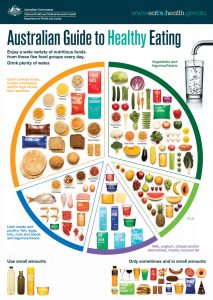 3. Nutrition
3. Nutrition  4. Mind
4. Mind

